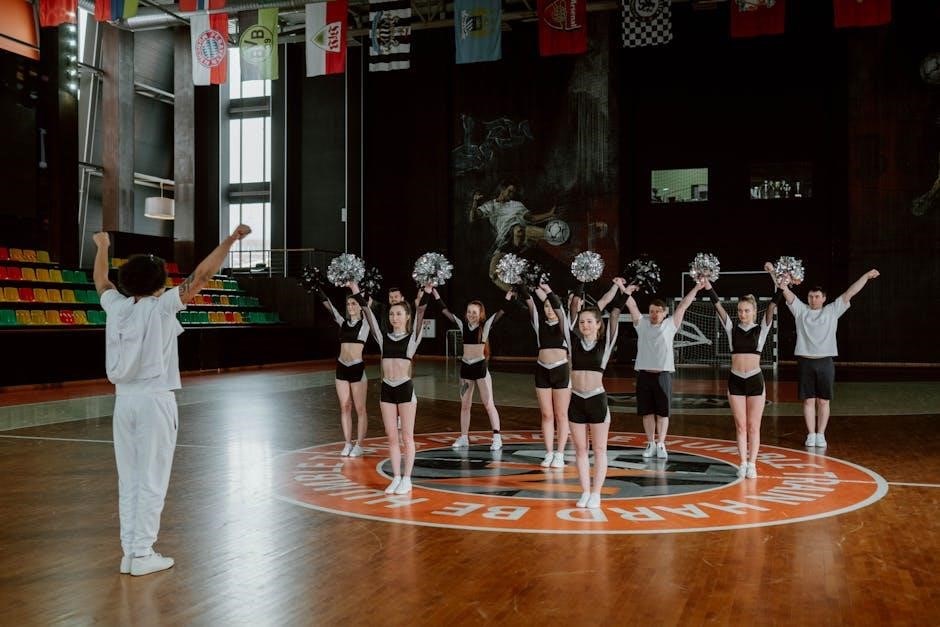The English Schools Athletics Standards 2024 outline performance benchmarks for athletes to qualify for national championships, ensuring fair competition and identifying emerging talent across track and field events.
Background of the English Schools Athletic Association (ESAA)
The English Schools Athletic Association (ESAA) is the premier organisation for school-level athletics in England, dedicated to fostering young talent and promoting the sport nationwide. Established in 1925, the ESAA has a rich history of organising national championships and setting performance standards to ensure fair competition. As a voluntary body run by teachers and athletics enthusiasts, it provides a platform for students to showcase their abilities, from county to national levels. The ESAA’s mission is to nurture athleticism, teamwork, and personal growth among students, creating a pathway for future stars in track and field events.
Importance of Athletics Standards in Schools
Athletics standards in schools play a crucial role in identifying and developing talented young athletes, ensuring competitions are fair and competitive. By setting clear benchmarks, these standards motivate students to improve performance, fostering a culture of excellence. They also provide a structured pathway for progression, from school to county and national levels. Meeting these standards is essential for qualification to major events, encouraging dedication and hard work. Ultimately, they contribute to the growth of grassroots athletics, nurturing future champions and promoting the sport’s values among students.
Overview of the 2024 Athletics Standards
The 2024 standards provide updated performance benchmarks, outlining qualification criteria for track and field events, ensuring equitable competition and identifying talent across all age groups and categories.
Key Features of the 2024 Standards
The 2024 standards introduce updated performance benchmarks across various age categories, including Senior, U23, Junior Boys, and Junior Girls. They outline specific qualification times for events like 100m and 200m races, ensuring competitive fairness. The standards are categorized into National, County, and School levels, providing clear progression pathways for athletes. Additionally, the document highlights changes from the 2023 standards, offering insights into the evolution of performance expectations. These features aim to foster growth, identify talent, and maintain high athletic standards across England.
Changes from the 2023 Standards
The 2024 standards reflect adjustments in performance benchmarks across multiple events, ensuring progression and competitiveness. Key changes include updated qualification times for 100m and 200m races, with specific adjustments for Junior Boys and Girls. The National, County, and School standards have been refined to better align with athlete development stages. Additionally, the 2024 document introduces clearer categorization of events and enhanced formatting for better readability. These changes aim to maintain fairness and elevate athletic performance standards across all age groups and event types.

Senior Men’s Athletics Standards 2024
The 2024 standards for Senior Men include specific performance benchmarks for 100m, 200m, and other track and field events, ensuring qualified athletes meet national competition requirements effectively.
100 Metres Standards
The 100 metres standards for Senior Men in 2024 require athletes to achieve a performance of 10.9 seconds to meet the qualification criteria for national championships. This standard ensures a high level of competitiveness and fairness in the event. Athletes must achieve this mark during eligible competitions by the specified closing date to be considered for selection. The 100 metres is a premier event, and meeting this standard demonstrates an athlete’s ability to compete at the highest school level. These standards are annually reviewed to maintain the integrity and progression of the sport.
200 Metres Standards
The 200 metres standards for Senior Men in 2024 are set at 23.2 seconds, reflecting a slight improvement from the previous year’s 23.8 seconds. This adjustment aims to maintain competitive integrity and ensure athletes demonstrate a higher level of speed and endurance. Achieving this standard is essential for qualification to national championships, showcasing an athlete’s ability to perform at elite levels. The progression from 23.8 to 23.2 seconds highlights the evolving expectations for athletes, encouraging them to strive for excellence in their training and competition preparation.
Other Track and Field Events
Beyond sprint events, the 2024 standards for Senior Men include specific benchmarks for other track and field disciplines. For the 400 metres, athletes must achieve 51.2 seconds, while the 800 metres standard is set at 2:03.5 minutes. In hurdles, the 110 metres standard is 15.2 seconds. Field events include a high jump standard of 1.90m, pole vault at 3.80m, and long jump at 6.30m. Throws require a shot put of 12.80m, discus at 35.50m, javelin at 45.50m, and hammer throw at 30.00m. These standards ensure a balanced and competitive evaluation across all events.

Senior Women’s Athletics Standards 2024
The 2024 standards for Senior Women outline performance requirements across various track and field events, ensuring athletes meet specific benchmarks to qualify for national competitions and showcase their abilities effectively.
The 100 metres standards for Senior Women in 2024 require athletes to achieve specific times to qualify for competitions. These benchmarks ensure a high level of performance, with national entry standards set at 11.4 seconds for the fastest category. County-level qualifiers typically need to run under 11.6 seconds, while school-level standards may allow slightly slower times, such as 12.2 seconds, to encourage participation. These standards are designed to identify talented athletes and prepare them for higher-level competitions, ensuring fairness and competitiveness across all events.
The 200 metres standards for Senior Women in 2024 are designed to reflect athletic excellence across different levels. National entry standards are set at 23.2 seconds, while county-level qualifiers typically require a time of 23.8 seconds. School-level standards may allow for slightly slower performances, such as 24.5 seconds, to encourage broader participation. These benchmarks ensure athletes meet a high level of performance, with specific criteria for progression to higher-level competitions. The standards are carefully reviewed annually to maintain competitiveness and fairness, reflecting the evolving nature of track and field athletics.
Beyond sprinting, the 2024 standards cover a wide range of track and field events, including hurdles, jumps, throws, and distance races. For instance, the 100m hurdles have entry standards ranging from 14.5s at the national level to 16.0s for school competitions. Long jump standards vary from 5.60m for senior men to 4.80m for junior boys, while high jump standards start at 1.80m for seniors and 1.60m for juniors. Shot put and discus events also have specific distance requirements, ensuring athletes meet performance benchmarks across all disciplines, promoting excellence and participation at every level.
Under-23 (U23) Athletics Standards 2024
The U23 standards serve as a transitional phase for young athletes, bridging the gap between junior and senior levels, with specific entry requirements for 100m, 200m, and field events.
Men’s U23 Event Standards
Men’s U23 event standards for 2024 include specific performance thresholds across track and field disciplines. Sprint events like the 100m and 200m require times of 11.4s and 23.2s, respectively. Middle-distance races, such as the 800m, demand a 1:55.0, while long-distance events like the 5000m require a 15:30.0. Field events set benchmarks for jumps and throws, with the high jump at 2.00m and shot put at 14.00m. These standards ensure athletes meet competitive levels before qualifying for national championships, fostering growth and excellence in young athletes transitioning to senior categories. Consistency and progression are key to achieving these rigorous targets.
Women’s U23 Event Standards
Women’s U23 event standards for 2024 are designed to challenge athletes and ensure competitive excellence. Sprint events require times of 12;4s for the 100m and 25.3s for the 200m. Middle-distance races, such as the 800m, demand a 2:15.0, while the 3000m asks for a 10:00.0. Field events set benchmarks like 1;70m for the high jump and 12.00m for the shot put. These standards reflect the progression needed for young athletes to compete at higher levels, ensuring they meet rigorous performance criteria before qualifying for major championships. Consistency and skill are essential to achieving these targets successfully;

Junior Boys’ Athletics Standards 2024
Junior boys’ standards include 100m (11.4s) and 200m (23.2s) targets, designed to identify emerging talent and prepare athletes for higher-level competitions while maintaining a focus on fair competition.
100 Metres Standards for Junior Boys
The 100 metres standards for junior boys in 2024 are set at 11.4 seconds for national entry, 11.6 seconds at the county level, and 12.5 seconds for school-level qualification. These benchmarks aim to ensure competitive fairness while nurturing young athletes’ potential. Achieving these times is crucial for participation in regional and national championships, providing a clear pathway for talent development and progression in athletics. The standards reflect a balance between challenging athletes and encouraging broader participation at various competition levels.
200 Metres Standards for Junior Boys
The 200 metres standards for junior boys in 2024 are set at 23.2 seconds for national entry and 23.8 seconds at the county level. These standards aim to identify and nurture young talent, ensuring competitive fairness while encouraging participation. Achieving these times is essential for advancing to higher levels of competition, providing a clear pathway for athletes to develop their skills. The standards reflect a balance between challenging athletes and fostering growth in the sport, helping to prepare junior boys for future success in athletics. They serve as a benchmark for progression and excellence in the 200 metres event.
Other Events for Junior Boys
Beyond the 100 and 200 metres, junior boys compete in various events with specific standards. The 400 metres requires a time of 52.1 seconds, while the 800 metres is set at 2:05.0. For field events, the long jump standard is 6.10 metres and high jump at 1.85 metres. These benchmarks ensure athletes meet competitive levels, fostering growth and excellence across diverse disciplines. The standards are designed to challenge and inspire, providing a clear path for junior boys to excel in their chosen events and progress to higher levels of competition within the athletics framework.

Junior Girls’ Athletics Standards 2024
The 2024 standards for junior girls include specific performance benchmarks across track and field events, ensuring athletes meet competitive levels while fostering growth and development in their athletic careers.
100 Metres Standards for Junior Girls
The 100 metres standards for junior girls in 2024 are set at 12.4s for national entry, 12.7s for county qualification, and 13.2s for area-level competition. School-level standards are slightly higher at 13.5s, ensuring a competitive yet achievable benchmark. These standards are designed to identify talented athletes while promoting fair competition across all levels. Meeting these times is essential for participation in regional and national events, providing a clear pathway for young athletes to showcase their skills and progress in the sport.
200 Metres Standards for Junior Girls
The 200 metres standards for junior girls in 2024 are set at 23.2 seconds for national qualification and 23.8 seconds for county-level entry. These benchmarks are designed to reflect a high level of performance while remaining achievable for talented young athletes. The standards ensure competitive fairness and provide a clear target for junior girls aiming to progress through regional and national competitions. Meeting these times is crucial for participation in championship events, fostering growth and excellence in track and field athletics at the grassroots level.
Other Events for Junior Girls
Beyond the sprint events, junior girls also compete in hurdles, relays, and field events. For the 300 metres hurdles, the 2024 standard is set at 44.8 seconds, while the 4×100 metres relay requires a time of 51.2 seconds. In field events, the long jump standard is 5.20 metres, and the javelin throw is set at 31.75 metres. These standards reflect the progression of skills and performance levels expected at each stage of competition, ensuring athletes are challenged to achieve their best while maintaining a focus on development and fair competition across all disciplines.
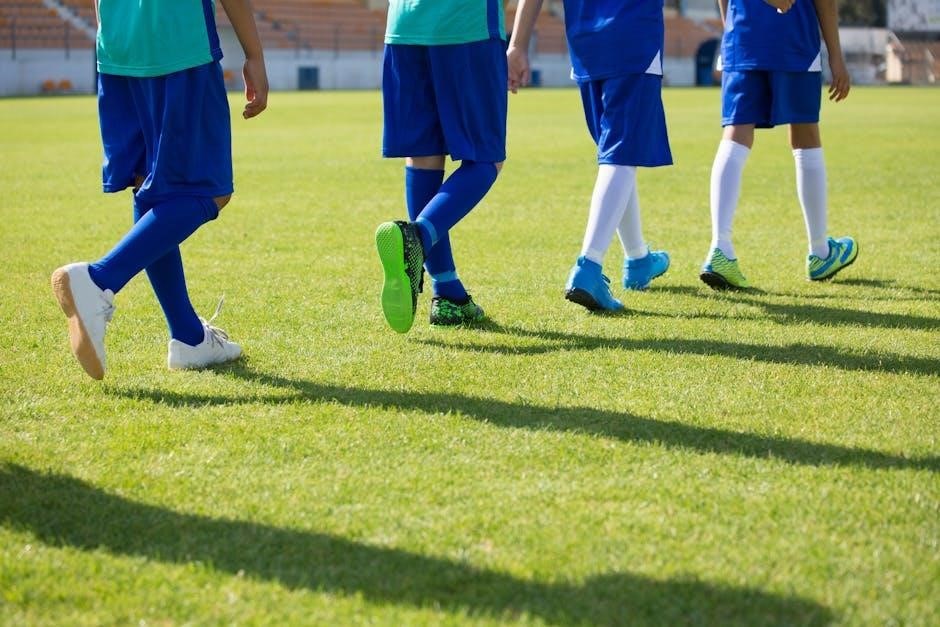
County and School Athletics Standards 2024
County and school standards provide a pathway for young athletes to progress, with specific benchmarks ensuring fair competition and identifying talent at grassroots levels effectively.
County-Level Qualification Standards
The 2024 county-level qualification standards serve as the initial step for athletes aiming to compete at higher levels. These standards vary by event and age group, ensuring a fair and competitive environment. Athletes must meet specific time or distance requirements to qualify for county-level events. For instance, in the 100 metres, junior boys are expected to achieve 11.6s, while junior girls must meet 12.7s. These standards are designed to identify talent and prepare athletes for more advanced competitions, fostering growth and excellence in school athletics.
School-Level Qualification Standards
The 2024 school-level qualification standards are designed to encourage participation and identify emerging talent within educational institutions. These standards are typically less competitive than county or national levels, focusing on fostering growth and skill development. For example, junior boys must achieve 13.0s in the 100 metres, while junior girls are expected to meet 13.5s. These benchmarks provide a foundation for young athletes to progress, ensuring they gain experience and confidence before advancing to higher levels of competition. They play a crucial role in nurturing athletics at the grassroots level.

Importance of Meeting the Standards
Meeting the 2024 athletics standards ensures athletes qualify for championships, fostering competitive fairness and identifying talent. It also promotes training consistency and performance improvement.
Why Standards Are Crucial for Participation
Standards are essential for ensuring fair competition, as they set benchmarks for athletes to achieve, guaranteeing that only qualified participants advance to higher levels. They also help maintain the integrity and credibility of the championships, ensuring that athletes are prepared to compete at a national level. By meeting these standards, athletes demonstrate their readiness and ability to perform alongside peers of similar skill levels. This fosters a competitive yet balanced environment, promoting excellence and motivating athletes to strive for continuous improvement in their training and performance.
Consequences of Not Meeting the Standards
Athletes who fail to meet the specified standards will not be eligible to participate in the championships, as entries are only accepted from those who achieve the required performance levels. This ensures fairness and maintains the competitive integrity of the events. Missing the standards may also limit opportunities for athletes to gain valuable experience at higher levels, potentially hindering their development and future prospects in the sport. Additionally, it may affect their eligibility for team selection and access to advanced training programs.
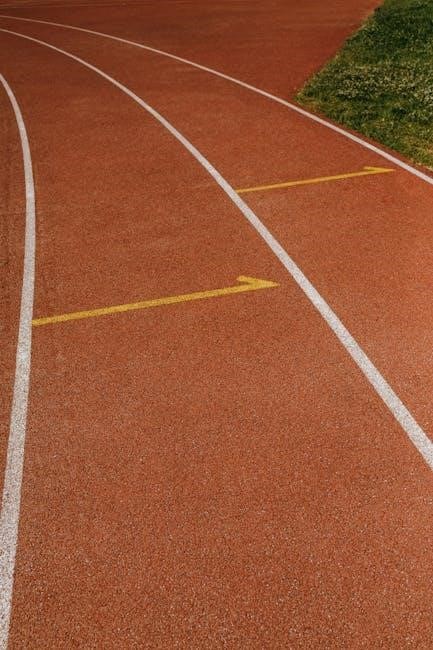
Qualification Process for Championships
Athletes must achieve the specified entry standards by the competition’s closing date to qualify for the championships, ensuring only eligible participants compete at the event.
How to Achieve Qualification Standards
Achieving qualification standards requires a strategic approach, including tailored training plans, consistent performance monitoring, and leveraging coaching expertise. Athletes must meet specific event criteria, ensuring their times or distances align with the published benchmarks. Regular participation in school and county-level competitions provides opportunities to demonstrate capability and gain experience. Additionally, understanding the UK Athletics (UKA) qualification process and adhering to deadlines is crucial for successful entry into championships. This structured path helps athletes prepare effectively and meet the necessary standards to compete at higher levels.
Role of UK Athletics (UKA) in Qualification
UK Athletics (UKA) plays a pivotal role in setting and verifying qualification standards for athletes aiming to compete in championships. They establish performance benchmarks, ensuring consistency and fairness across all events. UKA also oversees the verification of athletes’ performances, confirming they meet the required standards set by the English Schools Athletic Association (ESAA). Their guidelines and rules provide clarity for athletes, coaches, and schools, ensuring everyone understands the criteria for qualification. By adhering to UKA’s standards, athletes can confidently prepare and aim to achieve the necessary levels to participate in prestigious events.
Comparison with Previous Years’ Standards
The 2024 standards reflect annual updates, with adjustments to performance benchmarks to encourage progression and maintain competitive fairness, while building on previous years’ foundations and athlete feedback.
Evolution of Standards Over Time
The athletics standards have evolved annually to reflect performance trends and maintain competitive fairness. Each year, the benchmarks are refined based on athlete achievements and feedback. For 2024, the standards include updated performance levels for Senior, U23, and Junior categories, ensuring progression and consistency. Specific events, such as the 100 and 200 metres, have adjusted targets to challenge athletes appropriately. While the core objectives remain unchanged, the specifics are tailored to current athletic capabilities, ensuring the standards remain relevant and motivational for emerging talent across all age groups and events.
Key Differences from 2023 Standards
The 2024 standards introduce several updates compared to 2023. Performance thresholds for Senior and U23 categories have been adjusted to reflect higher benchmarks, particularly in sprint events like the 100 and 200 metres. Junior categories also saw changes, with tighter time standards for both boys and girls to ensure competitive balance. Additionally, the qualification process now emphasizes achieving the standards by specific closing dates, ensuring timely entries. These changes aim to maintain the integrity of the championships while challenging athletes to reach new heights in their performances across all track and field events.
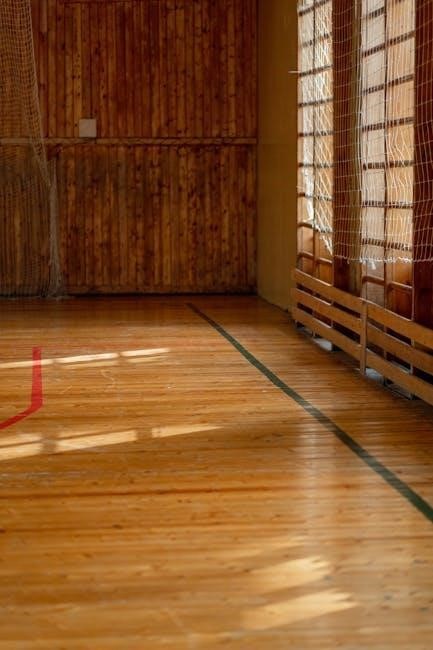
Availability of the 2024 Standards Document
The 2024 standards document is accessible via the official ESAA website, offering a downloadable PDF that details all performance benchmarks and qualification criteria for athletes.
Accessing the 2024 Standards PDF
The 2024 Standards PDF can be accessed directly from the English Schools Athletic Association’s official website. The document is available for download in a user-friendly format, ensuring that athletes, coaches, and schools can easily review the qualification criteria for each event. By visiting the ESAA website and navigating to the “Standards 2024” section, users can retrieve the PDF, which includes detailed performance benchmarks for all age groups and events. This resource is essential for planning and preparation for the upcoming championships.
Understanding the PDF Structure
The 2024 Standards PDF is organized into clear sections, making it easy to navigate. It includes event-specific standards for Senior Men, Senior Women, U23, Junior Boys, and Junior Girls, with detailed performance benchmarks. The document also outlines National, County, and School-level qualification criteria, providing a comprehensive guide for athletes and coaches. Additional sections explain the qualification process, UKA rules, and the importance of meeting standards. The PDF is structured logically, ensuring users can quickly find relevant information for their category and event.
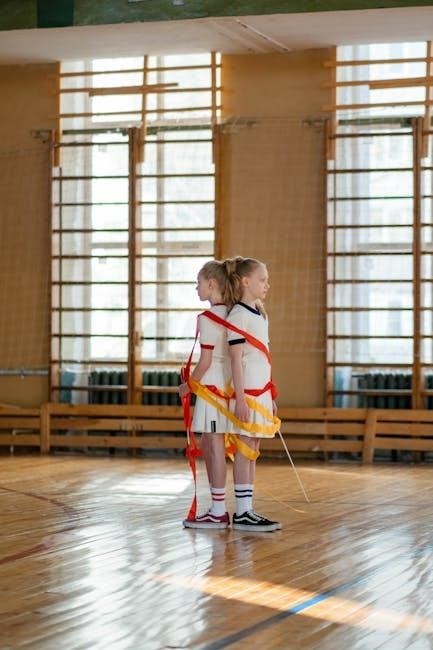
Future Implications of the 2024 Standards
The 2024 standards will influence training strategies and athlete development, setting a higher bar for future competitions while fostering growth in school-level athletics participation and excellence.
Impact on Training and Preparation
The 2024 standards will likely prompt athletes and coaches to intensify training, focusing on specific events and skill development. Higher benchmarks may necessitate earlier specialization and more structured practice routines. Schools and clubs might invest in advanced training facilities and expert coaching to meet the new criteria. Additionally, athletes may prioritize strength and conditioning programs to enhance performance. The updated standards could also encourage the use of data analytics to monitor progress and tailor training plans effectively, ensuring athletes are optimally prepared for competition.
Preparing for Future Championships
Athletes aiming for future championships must adopt a long-term development approach, focusing on gradual performance improvement. By analyzing the 2024 standards, they can set realistic goals and create tailored training plans. Incorporating periodized training cycles will help peak performance align with key competitions. Additionally, gaining experience in regional and national events will build competition readiness. Coaches and athletes should also stay informed about upcoming standard changes to ensure they remain competitive and prepared for the evolving demands of English Schools Athletics Championships.
The 2024 English Schools Athletics Standards provide clear performance benchmarks, guiding athletes and coaches while fostering talent and fair competition, shaping future athletic achievements.
The 2024 English Schools Athletics Standards provide detailed performance benchmarks for athletes, ensuring fair competition and identifying talent. These standards are essential for qualification, with specific requirements for each age group and event. Achieving these standards is crucial for participation in national championships, and athletes must meet them by the competition’s closing date. The standards are structured to promote progression, from school to county and national levels, while also aligning with UK Athletics (UKA) qualification rules. This system ensures athletes are prepared for higher-level competitions and fosters growth in track and field.
Final Thoughts on the 2024 Standards
The 2024 English Schools Athletics Standards represent a balanced approach to fostering growth and competitiveness in young athletes. By setting clear benchmarks, they ensure fairness and inspire athletes to strive for excellence. These standards not only identify emerging talent but also provide a structured pathway for progression, from school to national levels. Their alignment with UK Athletics rules further enhances their credibility and relevance. Overall, the 2024 standards are a vital tool for nurturing the next generation of track and field athletes, equipping them for future success in the sport.
